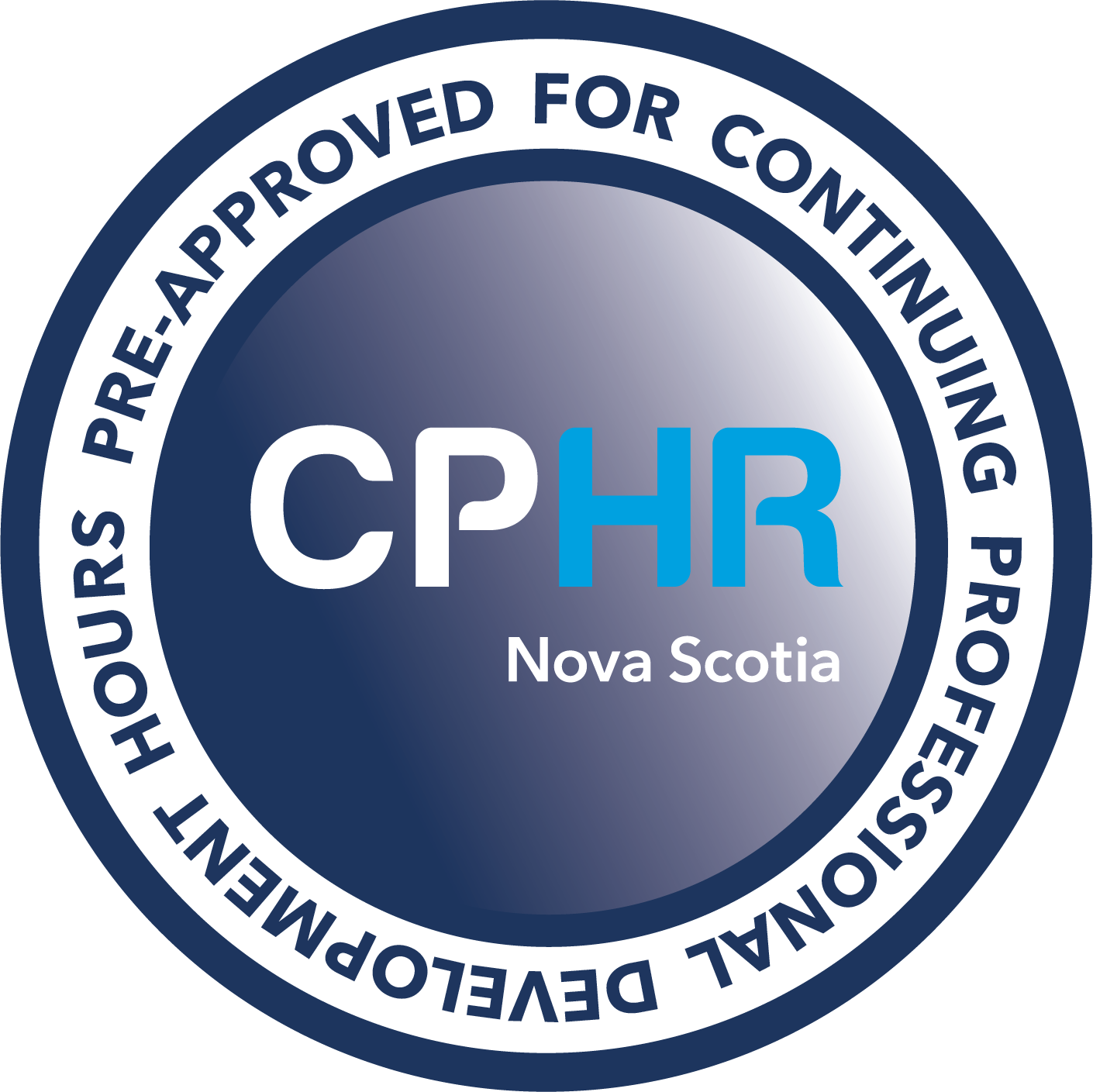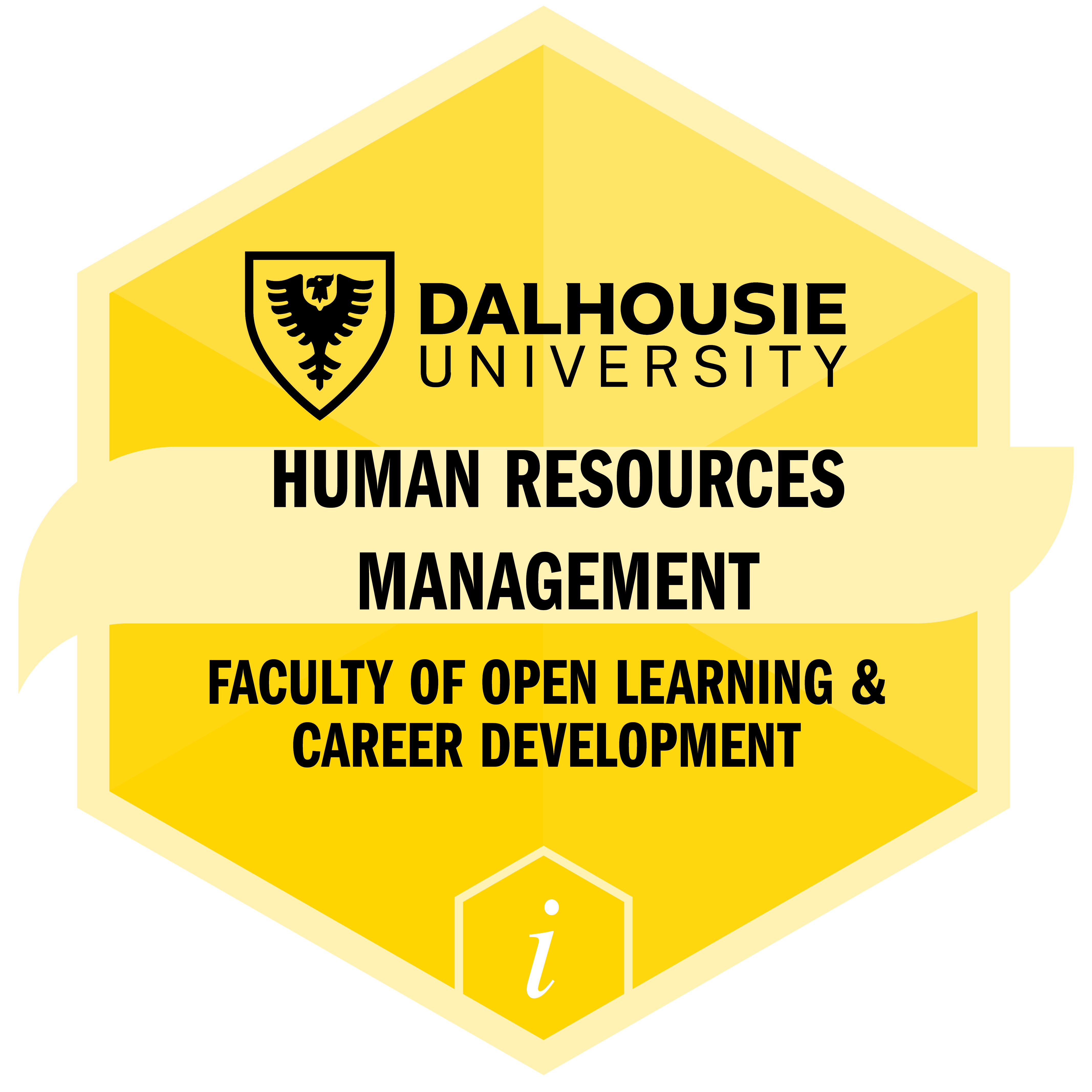Course Description
 This 12-week course will introduce contemporary human resources (HR) practices. Human resources have become critical to organizational, team and individual successes. The course will begin with an overview of the strategies and outcomes, as well as some of the main challenges. The role of diversity is one of the foundational concepts applicable to public and private sector organizations. The course considers not only the reasons for diversity, but some of the main ways in which HR addresses diversity. This topic leads into an examination of recruitment and selection, focusing on best practices and processes to improve effectiveness. Various methods of building and maintaining staff capacity are examined and linked to the performance of the organization and teams. We then consider rewards, the total compensation function, concluding with employee relations, communication, and legislative roles and standards that HR must promote and support.
This 12-week course will introduce contemporary human resources (HR) practices. Human resources have become critical to organizational, team and individual successes. The course will begin with an overview of the strategies and outcomes, as well as some of the main challenges. The role of diversity is one of the foundational concepts applicable to public and private sector organizations. The course considers not only the reasons for diversity, but some of the main ways in which HR addresses diversity. This topic leads into an examination of recruitment and selection, focusing on best practices and processes to improve effectiveness. Various methods of building and maintaining staff capacity are examined and linked to the performance of the organization and teams. We then consider rewards, the total compensation function, concluding with employee relations, communication, and legislative roles and standards that HR must promote and support.
Course Outline
- Introduction to Human Resources
- The Canadian Legal Environment
- Diversity, Equity and Inclusion
- Workplace Health & Safety
- The Design of Work and Workforce Planning
- Job Analysis and Competency Modeling
- Recruitment
- Selection
- Onboarding, Training and Development
- Performance Review
- Total Rewards
- Labour Relations
What You Will Learn
Upon completion of this course, learners will be able to:
- Assess the challenges facing the human resources management function and their implications for practitioners.
- Explain the Canadian legal environment within which the human resources management functions.
- Explain the benefits of diversity management and the incorporation of diversity management initiatives into an organization's business strategy.
- Explain the Canadian legal environment within which the human resources management functions.
- Discuss the role of human resource planning in achieving organizational goals.
- Recommend recruitment methods and sources to attract applicants for positions of varying levels within the organization.
- Design selection methods to assess applicants for various positions within the organization.
- Discuss the elements of employee orientation and training programs that meet employee needs and organizational goals.
- Describe performance appraisal systems that support organizational goals.
- Evaluate compensation systems that assist organizations to attract and retain employees while ensuring internal equity within the organization.
- Describe key processes in labour relations including certification, negotiation and administration of the collective agreement.
Microcredential
This course provides learners with the opportunity to earn a microcredential. A microcredential is evidence of a skill or competency that is employment related. Dalhousie microcredentials are developed in collaboration with employers, industries, and/or organizations that relate to the content. A microcredential can be displayed on social media pages, digital resumes, personal webpages, and in email signatures. To earn the microcredential in this course, learners will need to successfully complete a competency-based assessment.
Notes
The Faculty of OLCD recommends an intermediate level of English language proficiency for the most effective learning and participation in our online and face-to-face courses. A list of minimum recommended scores on some common English tests can be found on our website. If you have questions about your English language proficiency and ability to succeed in this course, please contact openlearning@dal.ca.
Applies Towards the Following Certificates
- Certificate in Human Resource Management : Required
- Certificate in Police Supervisory Skills : Required

 "I create learning that sticks.“
"I create learning that sticks.“